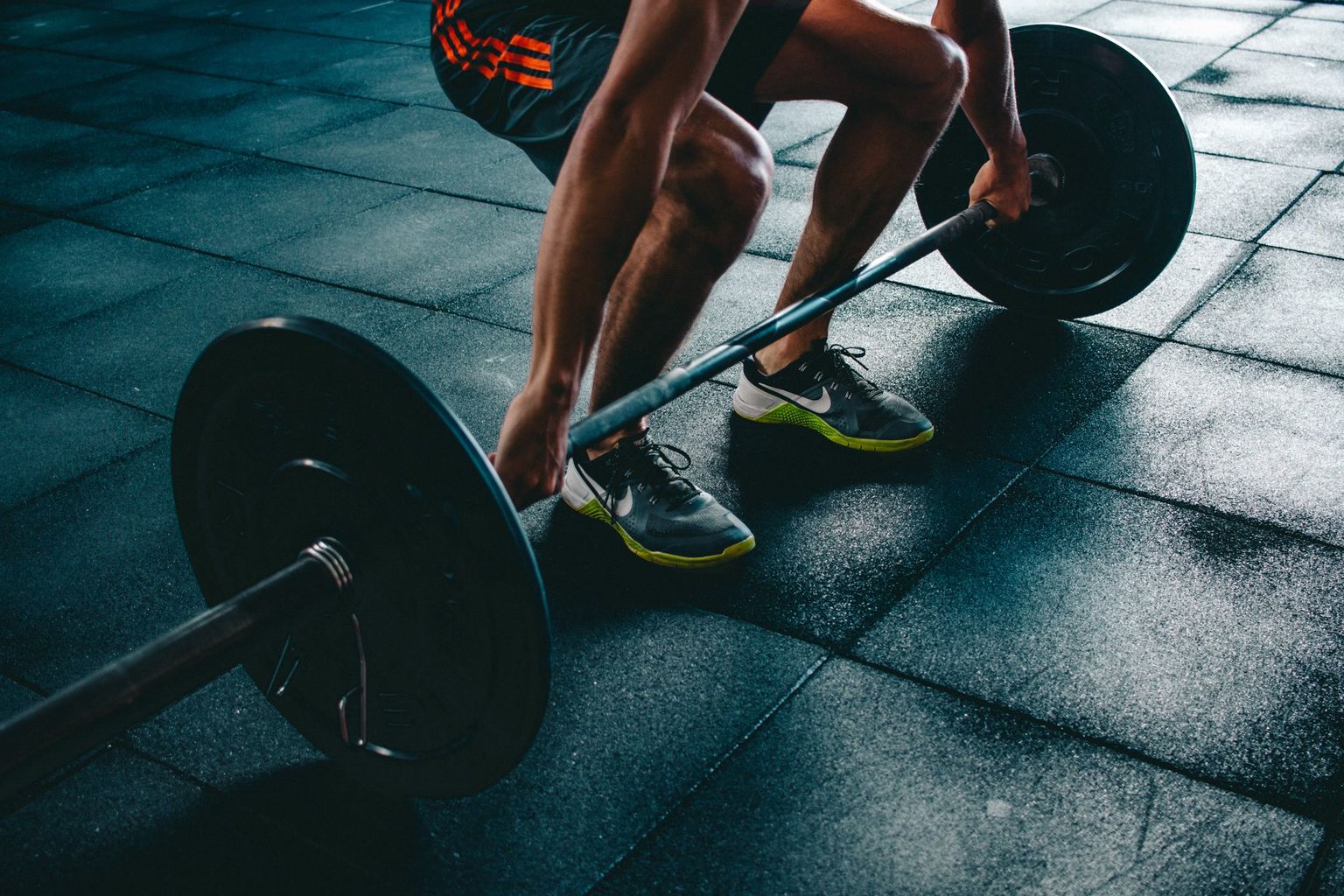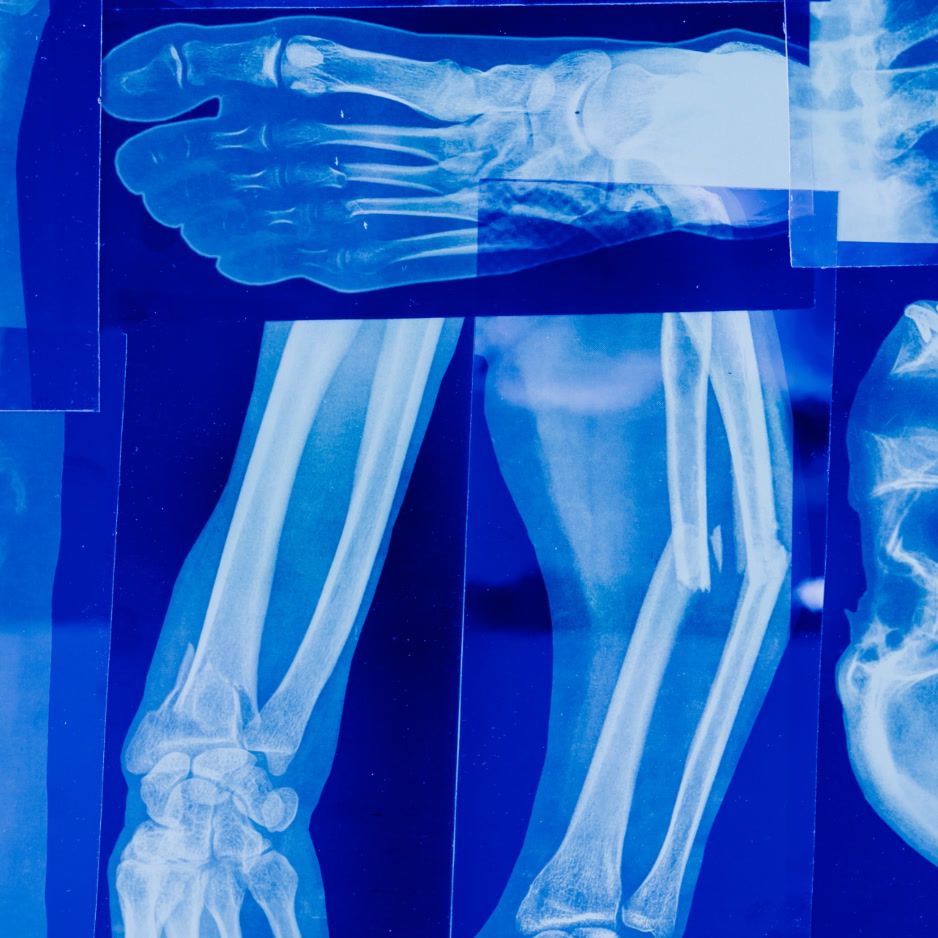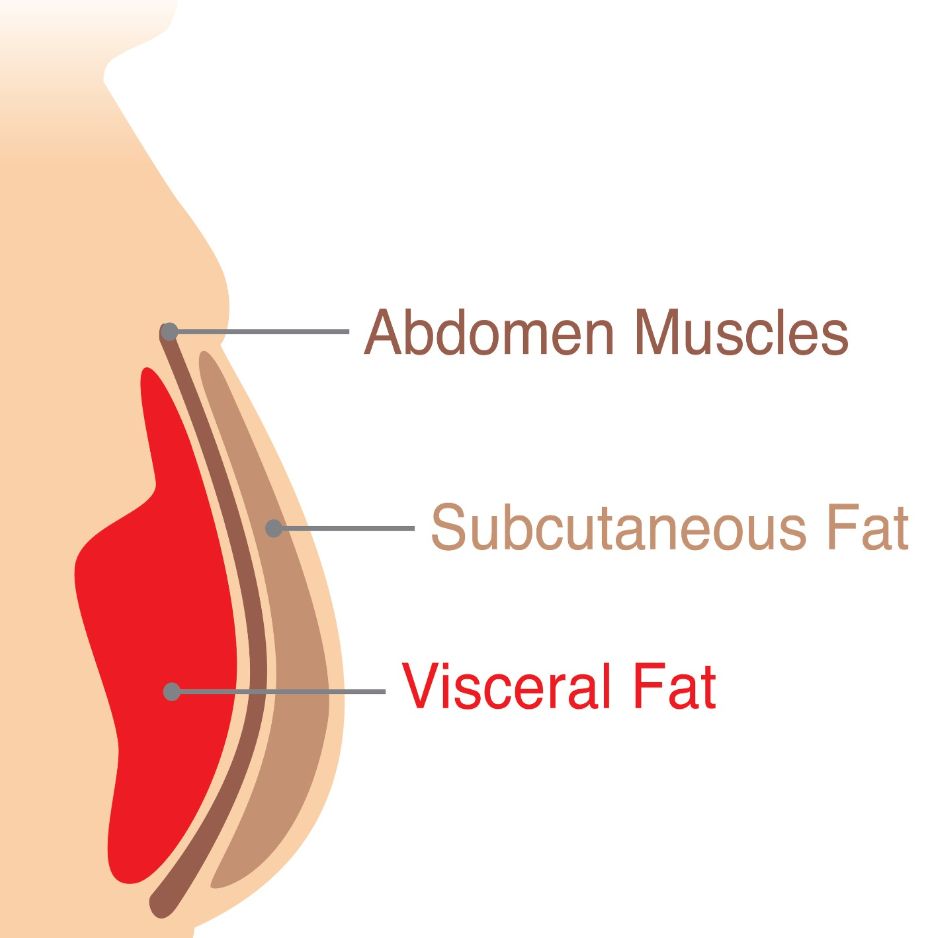Vibration Plate Benefits, Safety & Workouts
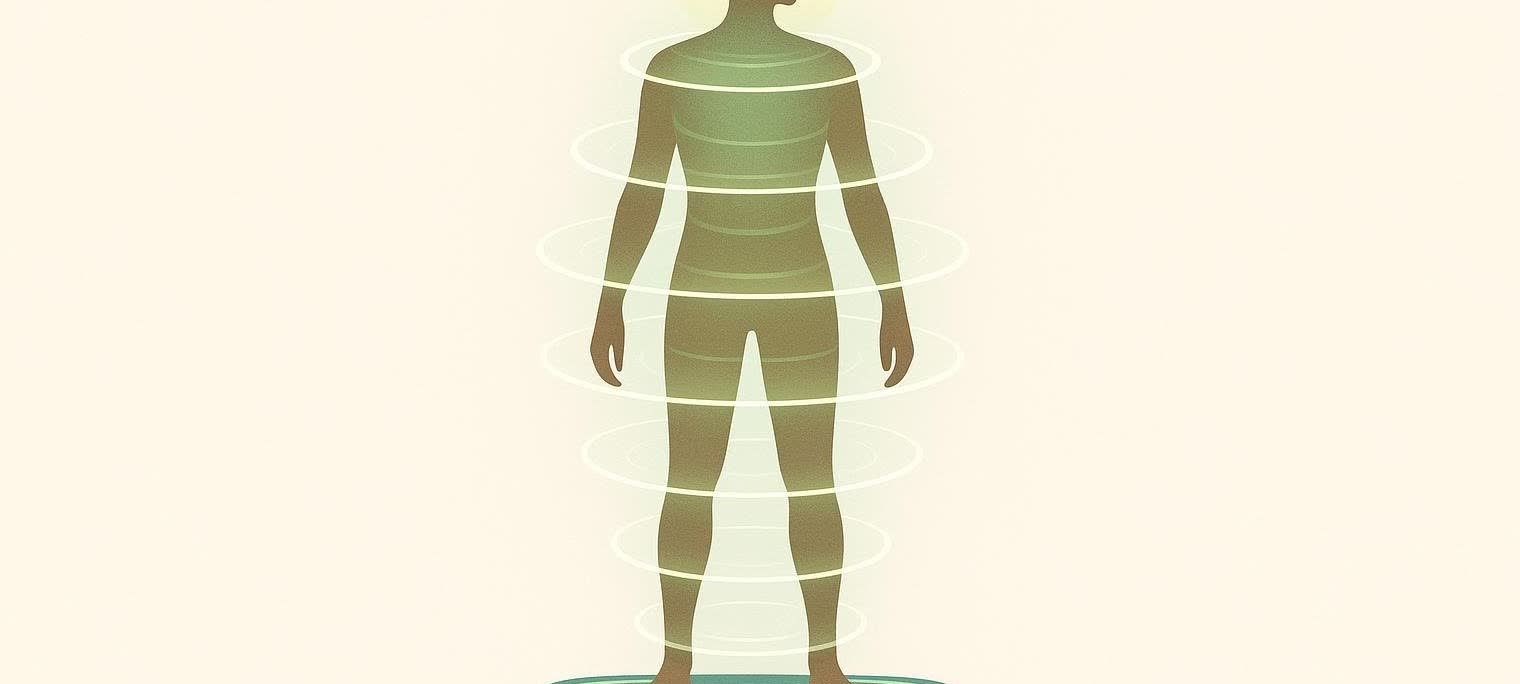
Vibration Plate Benefits, Safety & Workouts (2025)
Whole-body vibration plates—also called vibration platforms or WBV machines—promise faster workouts, stronger muscles, and even denser bones in just a few minutes a day. But do the claims hold up, and how do you get started safely? This guide breaks down the research, addresses misconceptions, and gives you evidence-based routines so you can decide whether shaking things up belongs in your fitness plan.
Quick TL;DR
- A vibration plate moves 20–60 times per second, forcing your muscles to contract reflexively.
- Clinical studies suggest benefits for muscle strength, visceral-fat reduction, balance, and bone density—especially when paired with traditional exercise and sound nutrition (WebMD).
- Healthy adults often start around 30 Hz for 10 minutes, three times a week, while older adults or rehab clients may begin as low as 15 Hz (Mayo Clinic).
- If you want hard proof of progress, book a DEXA scan every 8–12 weeks to quantify fat loss, lean-mass gains, and bone-density changes.
- Contraindications include pregnancy, pacemakers, fresh joint replacements, and uncontrolled cardiovascular issues—always check with a clinician first.
Bottom line: Treat the plate as a supplement, not a magic bullet. Pair it with smart training and track results with objective data.
What Is a Vibration Plate?
Picture a stout platform that looks like a mini dance stage. Once you stand, sit, or plank on it, the base oscillates—either pivotal (seesaw) or lineal (up–down)—at speeds measured in hertz (Hz). One hertz equals one cycle per second, so a 30 Hz plate vibrates 30 times each second.
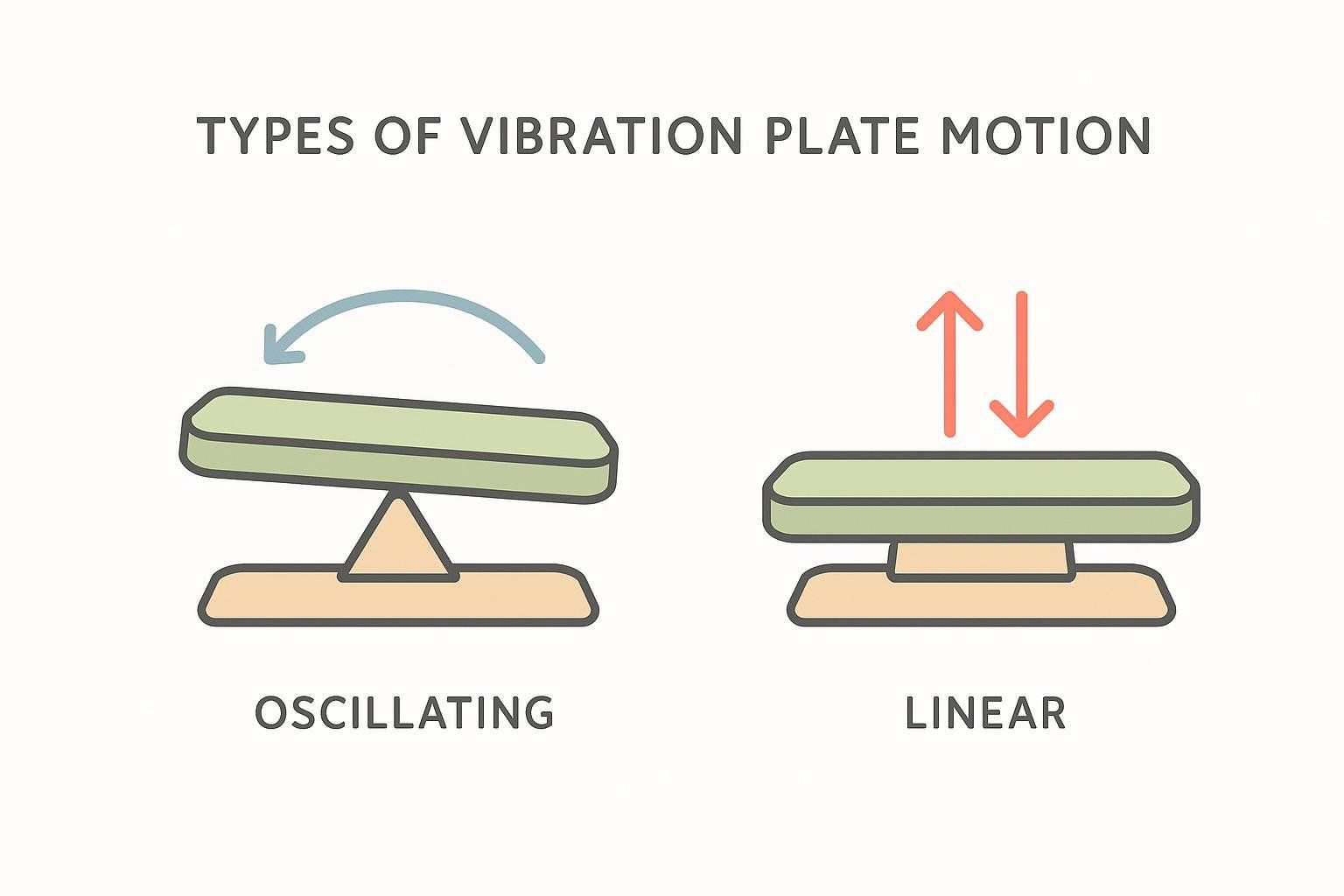
The motion triggers the tonic vibration reflex. Your body thinks you’re losing balance and fires muscle fibers to stabilize you. The result? Hundreds of involuntary contractions per minute—even while you hold static poses.
How Whole-Body Vibration Works (The Science in Plain English)
| Mechanism | What Happens | Why It Matters |
|---|---|---|
| Tonic vibration reflex | Rapid muscle-spindle stretch sends signals to the spinal cord, recruiting extra motor units. | Boosts muscle activation without heavy external loads. |
| Osteogenic stress | Tiny acceleration changes create shear forces on bone. | Stimulates bone-building cells (osteoblasts). |
| Circulatory & lymphatic pump | Oscillation alters hydrostatic pressure in vessels. | May enhance blood flow, reduce edema, and aid recovery. |
| Hormonal responses | Small trials note short-term spikes in growth hormone and modulated cortisol levels (see Medicine & Science in Sports & Exercise). | Growth hormone supports muscle repair, while balanced cortisol helps limit stress-related muscle breakdown. |
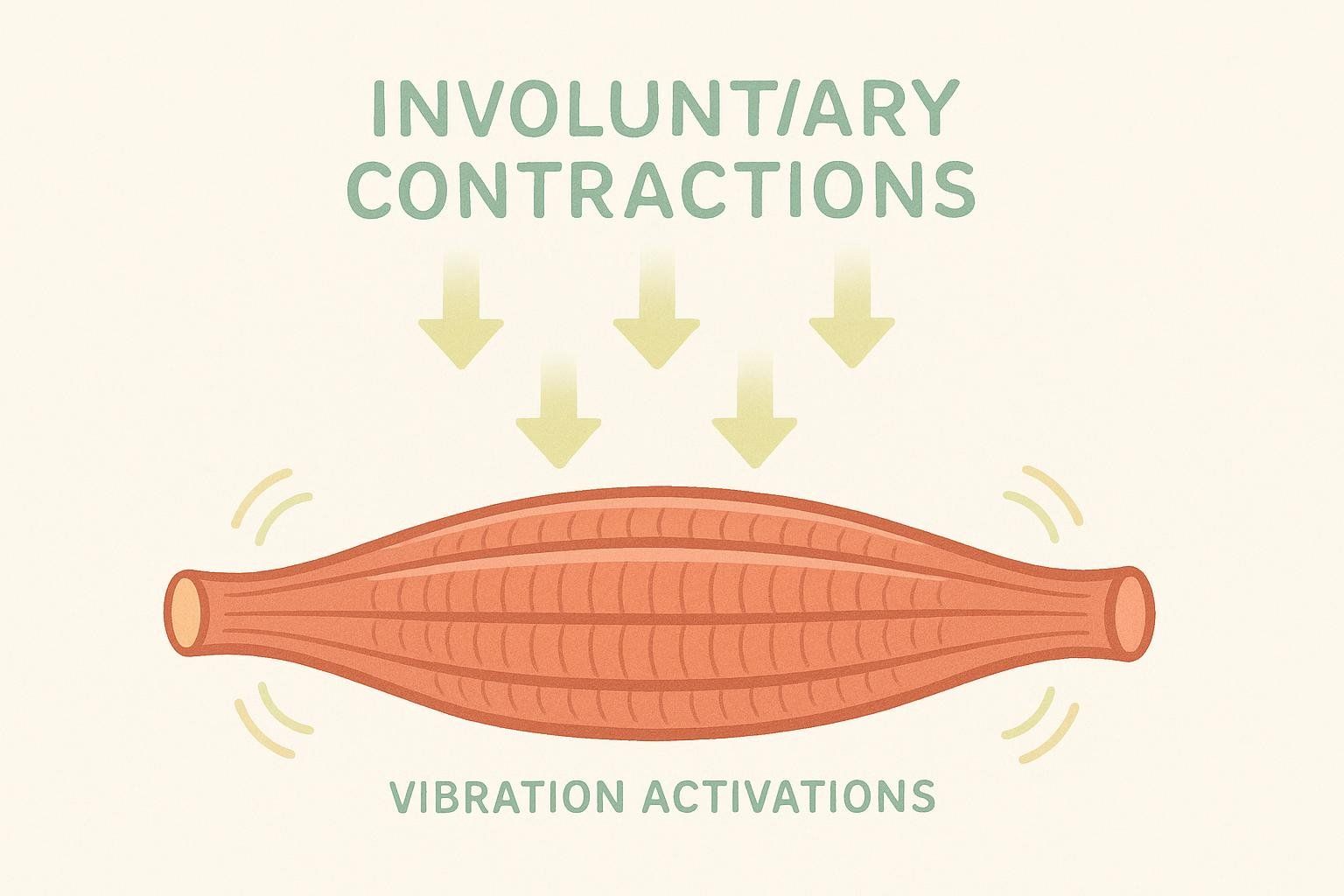
8 Research-Backed Benefits

- Muscle Strength & Power – A 2024 systematic review of 21 RCTs found WBV significantly improved lower-body strength and jump performance in postmenopausal women compared with non-exercise controls (International Journal of Environmental Research and Public Health).
- Visceral-Fat Reduction – A 2018 review in PLOS ONE reported that 10 weeks or more of WBV “decreased visceral adipose tissue concentrated in the trunk” when paired with calorie control.
- Bone Density Support – Guidance from the Mayo Clinic notes that vibration layered onto light exercise can help maintain or modestly improve hip and spine BMD in post-menopausal women.
- Balance & Fall Prevention – Low-frequency plates (<25 Hz) improved postural stability in seniors within six weeks in multiple small clinical trials summarized by WebMD.
- Lower Back-Pain Relief – A 2024 meta-analysis in the Journal of Clinical Medicine found WBV reduced pain and disability scores in non-specific chronic low-back-pain patients.
- Circulation & Lymphatic Drainage – A 2023 review in Frontiers in Physiology showed short bouts of WBV boost peripheral blood flow—useful for desk-bound workers.
- Blood-Pressure Reduction – A 2016 six-week RCT in overweight women recorded 5–7 mmHg drops in brachial systolic BP after dynamic WBV sessions (Hypertension Research).
- Cognitive Benefits – A 2023 systematic review in Healthcare reported that WBV improved attention, executive function, and processing speed in both healthy and clinical populations.
Evidence quality ranges from modest to strong depending on the outcome; larger long-term trials are still needed.
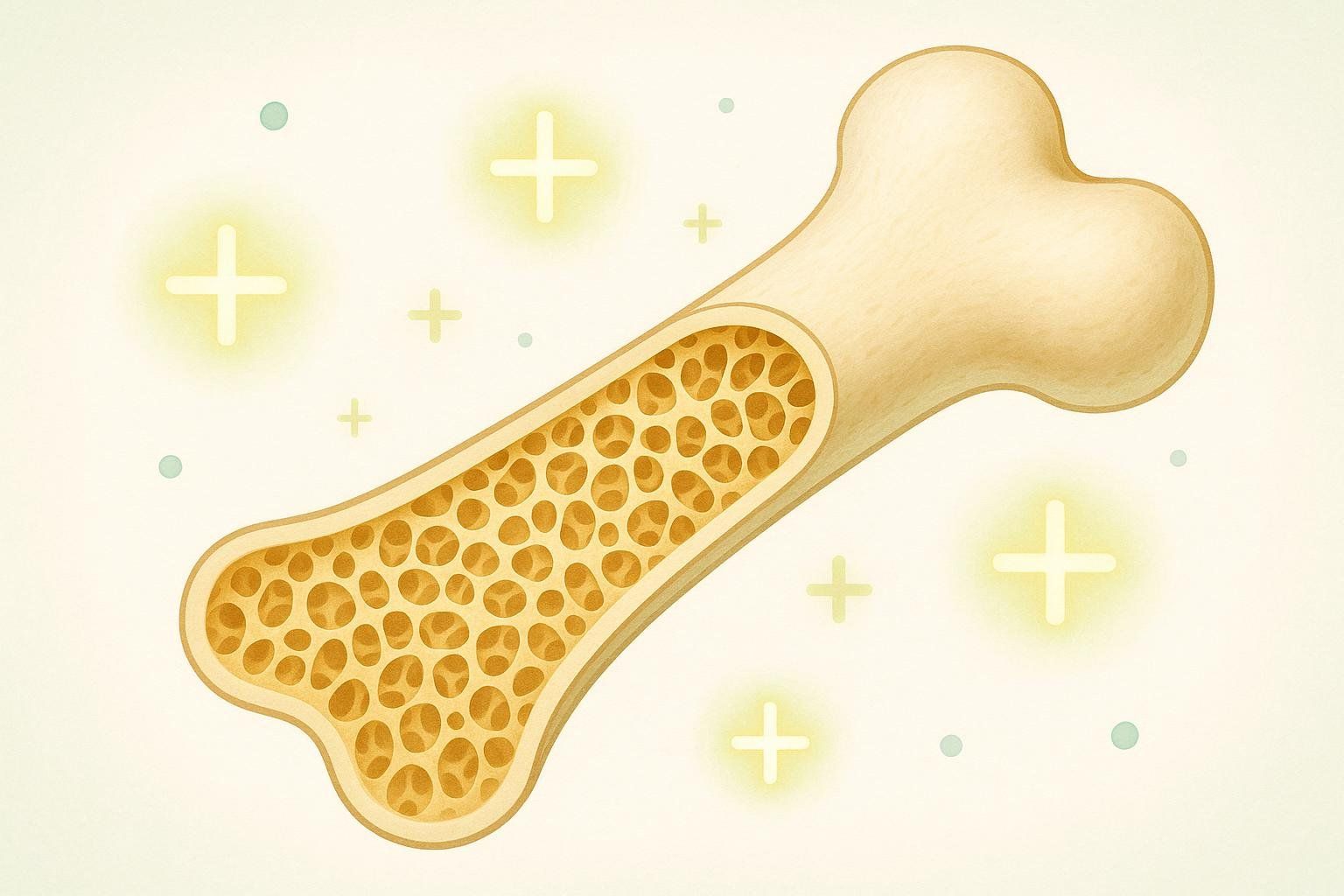
Who Stands to Gain the Most?
| User Type | Primary Goal | Recommended Protocol |
|---|---|---|
| Time-Crunched Athlete | Break plateaus, add intensity efficiently | 30–45 Hz, 10-minute circuits post-strength workouts, 3 × /week |
| Senior Seeking Stability | Maintain bone density, ease joint stress | 15–25 Hz, static balance drills 5 min/day, 5 × /week |
| Rehab Professional | Evidence-based tool for patients | 20–30 Hz, single-leg stance & hip-abduction drills, 2 sets × 30 s |
Safety Warnings & Contraindications
Whole-body vibration is not safe for everyone. Avoid using a vibration plate—or consult a medical professional first—if you have any of the following conditions:
- Pregnancy
- Pacemaker or other implanted electronic devices
- Acute thrombosis
- Fresh fractures or joint replacements (<3 months)
- Severe migraines triggered by vibration
Safety Checklist
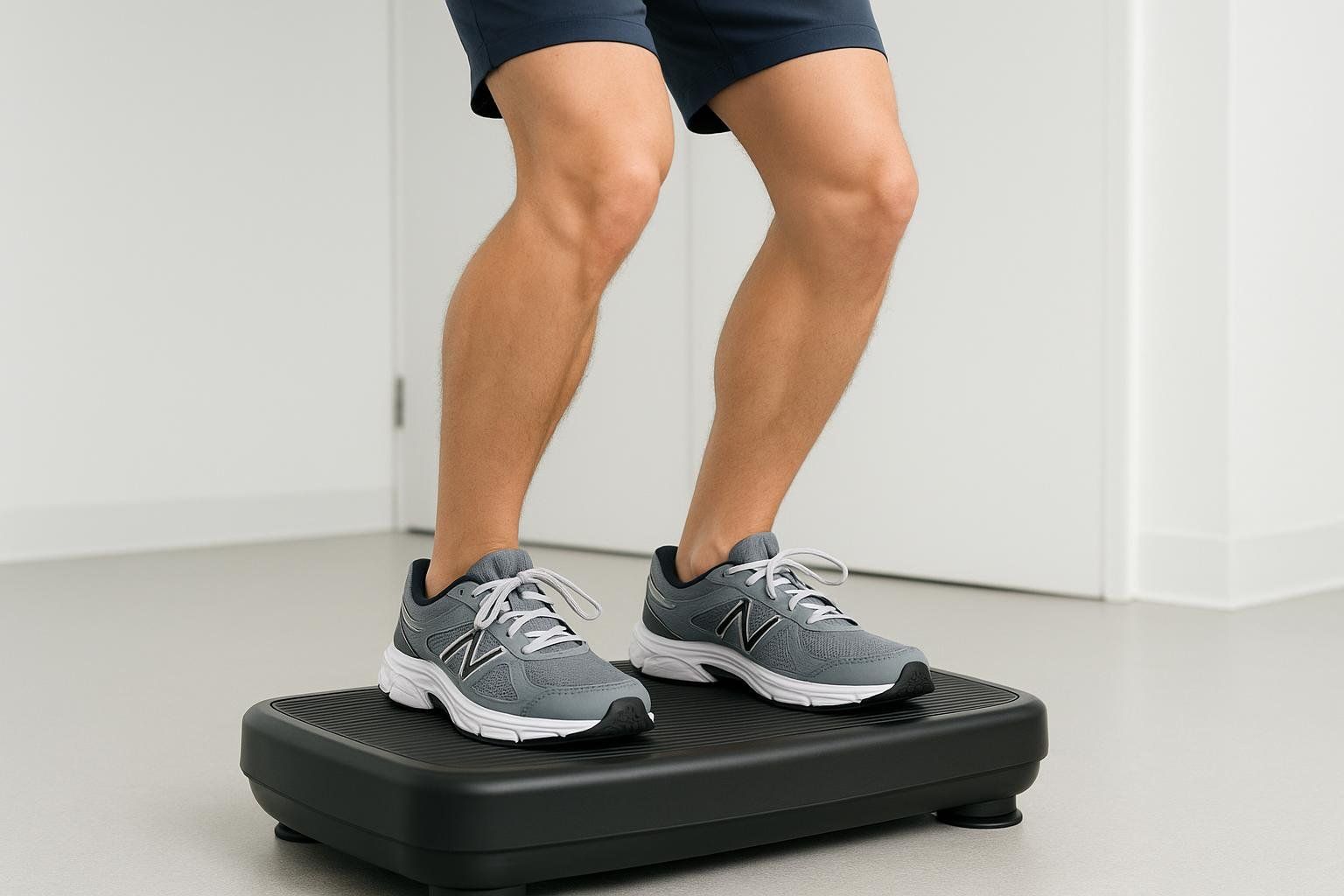
- Start Low, Progress Slow – Begin at 15–20 Hz for 30 seconds and assess tolerance.
- Soft Knees – Never lock joints; slight flexion dampens stress on cartilage.
- Footwear – Supportive cross-trainers absorb excess shock.
- Time Cap – Most benefits saturate by 15 minutes total exposure per day.
- Post-Session Mobility – Light stretching helps disperse residual muscle tension.
Beginner’s Blueprint: Your First Week on the Plate
| Day | Focus | Frequency | Duration | Tips |
|---|---|---|---|---|
| 1 | Basic acclimation stance | 15 Hz | 2 × 30 s | Relax shoulders; breathe slowly. |
| 2 | Mini squats | 15 Hz | 3 × 30 s | Push hips back; keep chest tall. |
| 3 | Core plank | 15–18 Hz | 2 × 30 s | Brace abs; keep hips level. |
| 4 | Single-leg balance | 18 Hz | 3 × 20 s/leg | Fix gaze; squeeze glutes. |
| 5 | Active rest | — | — | 5-min walk + calf stretch. |
| 6 | 8-min combo circuit | 18–20 Hz | 4 moves × 2 rounds | Keep HR <70 % max. |
| 7 | Light recovery | 15 Hz | 2 × 30 s | Practice diaphragmatic breathing. |
Begin each session with 1–2 minutes of non-vibrating warm-up (march in place) and finish with gentle stretching.
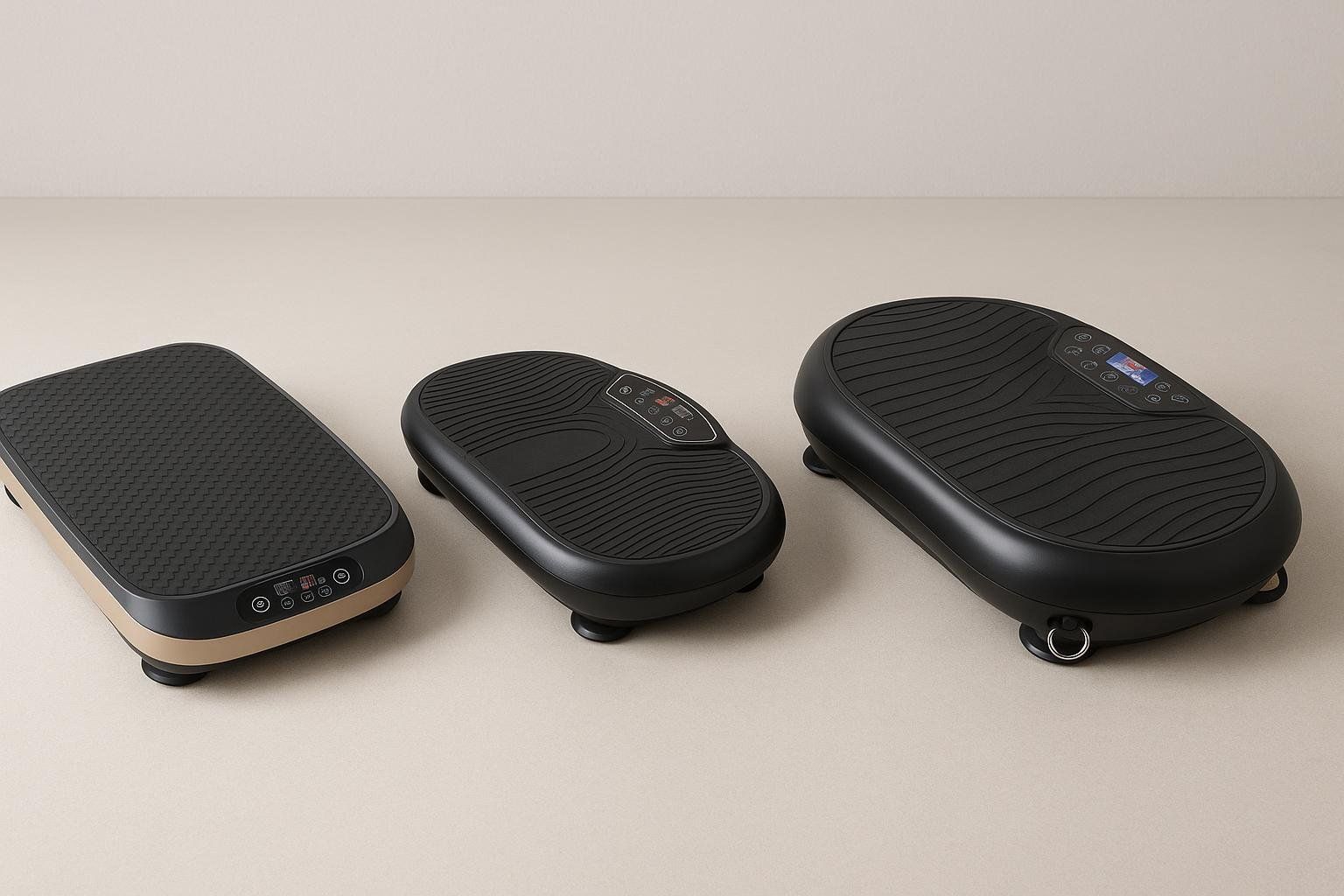
Buying Guide: Key Features to Compare
| Feature | Why It Matters | Practical Tip |
|---|---|---|
| Frequency | Drives training effect | Look for a model with a wide adjustable range (~15–45 Hz). |
| Amplitude | Higher = more intense | Beginners: 1–4 mm; advanced: >4 mm. |
| Motion Type | Pivotal vs. lineal affects feel | Pivotal is gentler; lineal is more intense. |
| Motor Quality | Smoothness & durability | Quiet, consistent motor—check reviews. |
| Weight Capacity | Safety & longevity | Should exceed your body weight + gear. |
| Footprint & Noise | Apartment-friendly | Verify dimensions & decibel rating. |
Sample Vibration Plate Workouts
1. 10-Minute Beginner Burner
| Interval (45 s work / 15 s rest) | Exercise | Frequency |
|---|---|---|
| Round 1 | Semi-squat hold | 25 Hz |
| Round 2 | Incline push-ups (hands on plate) | 30 Hz |
| Round 3 | Standing calf-raise pulses | 25 Hz |
| Round 4 | Glute bridge (feet on plate) | 30 Hz |
| Round 5 | High-plank hold | 30 Hz |
Repeat the five rounds twice (total 10 minutes).
2. 15-Minute Strength + Cardio Circuit
| Interval (45 s work / 15 s rest) | Exercise | Frequency |
|---|---|---|
| Round 1 | Body-weight squat | 35 Hz |
| Round 2 | Push-up to shoulder tap | 30 Hz |
| Round 3 | Alternating step-ups | 30 Hz |
| Round 4 | Dynamic plank jacks | 35 Hz |
| Round 5 | Mountain climbers | 35 Hz |
Complete three rounds for 15 minutes total.
3. 5-Minute Recovery Flush
| Duration | Recovery Move | Frequency | Notes |
|---|---|---|---|
| 60 s | Seated hamstring stretch | 15 Hz | Lean forward gently. |
| 60 s | Calves on plate (seated) | 15 Hz | Let muscles relax. |
| 60 s | Quad stretch—left leg | 20 Hz | Tuck pelvis. |
| 60 s | Quad stretch—right leg | 20 Hz | Repeat. |
| 60 s | Ankle circles seated | 15 Hz | Slow circles. |
Track Your Results the Data-Driven Way
Don’t eyeball progress—measure it. A DEXA scan quantifies changes in:
- Lean mass: Are those micro-contractions adding up?
- Fat mass & visceral fat: Verify whether the plate plus diet moves the needle.
- Bone mineral density: Essential for anyone concerned about osteoporosis.
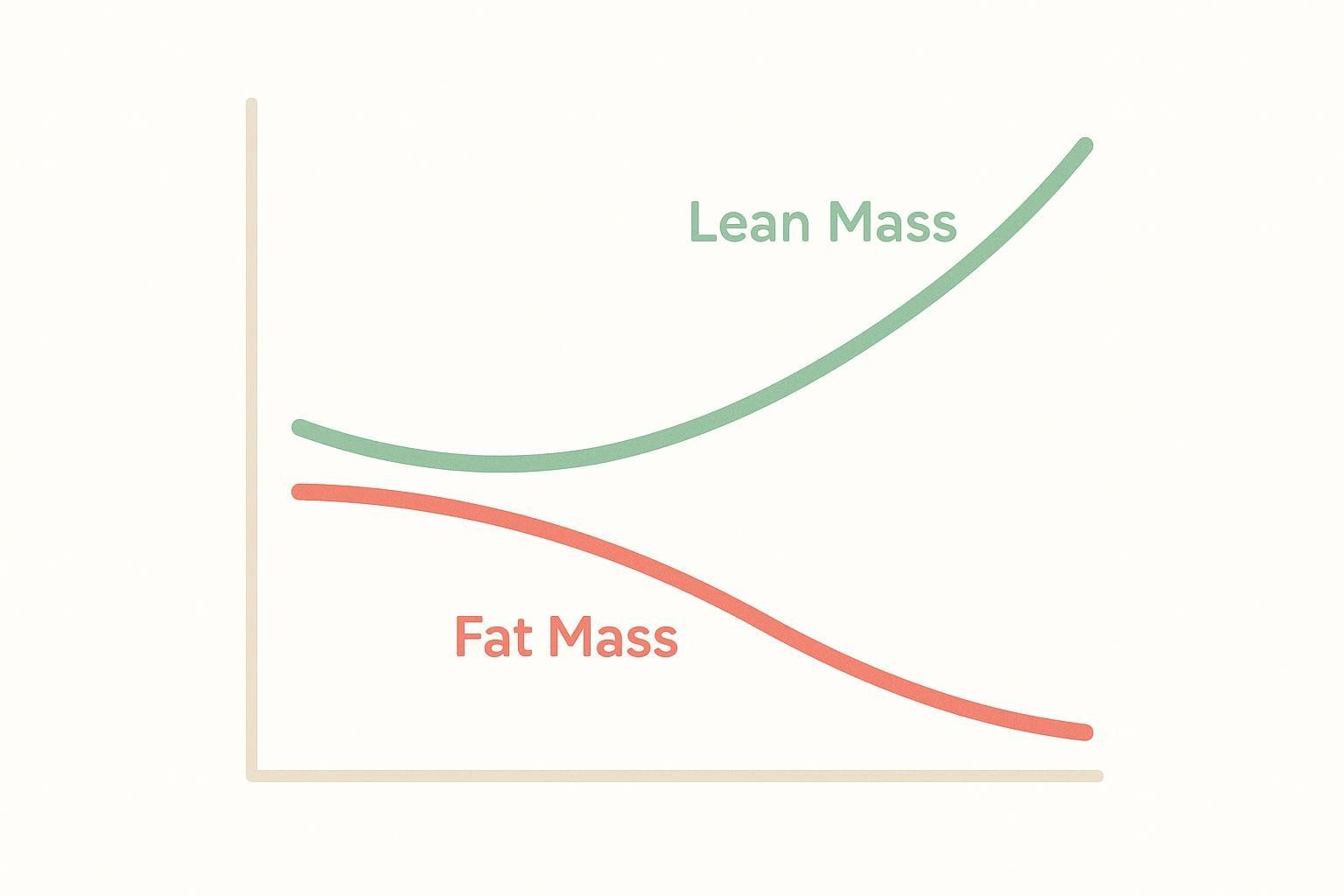
Learn more in our guide to interpreting DEXA scan results.
FAQ (Snippet Friendly)
How long should you stand on a vibration plate?
Most studies use 10–15 minutes, three to five times per week.
Does a vibration plate burn belly fat?
Research shows WBV plus calorie control can reduce visceral fat more than cardio alone in some groups.
Is vibration training safe for seniors?
Generally yes at lower frequencies (<25 Hz), but get medical clearance.
Which frequency is best?
25–35 Hz for strength, 15–25 Hz for balance/bone, 30–45 Hz for power.
Can vibration plates build bone density?
They can help maintain or modestly improve BMD when paired with weight-bearing exercise.
Key Takeaways
- Think “supplement, not substitute.” WBV boosts results but won’t replace lifting or cardio.
- Sweet spot: 10–15 minutes at evidence-based frequencies.
- Screen for contraindications before starting.
- Verify progress with objective data like DEXA.
Ready to see if a vibration plate can fast-track your goals? Start with a baseline scan, follow a routine, and let hard data guide your next move.
